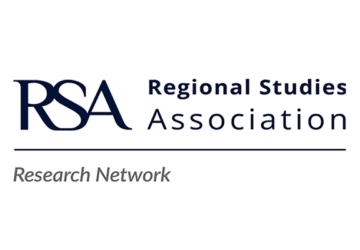







Organisers: Prof. C. Patrick Heidkamp, Southern Connecticut State University Dr. John Morrissey, Mary Immaculate College, University of Limerick Dr. Catherine Chambers, University Centre of the Westfjords Coastal areas, despite only occupying a relatively small percentage of the Earth’s land-surface, provide more than one third of the globe’s value of ecosystem services. Coastal areas are also […]

The Report of An Inquiry into Regional Problems in the United Kingdom was published subsequent to an examination, by the Association, of the changing regional problem.

The first truly non-UK branch was established in the Republic of Ireland.

The first issue of the Newsletter was sent to members, and a programme of five meeting took place in London. Regional branches were formed in Scotland, Yorkshire and Humberside, and East Anglia.

A decision was taken to establish the Regional Studies Association, and a Steering Committee was formed


The International Centre for Regional Planning and Development (ICRPD) was formed

By 1997, the Association’s trajectory towards internationalisation was firmly established; the ERRN was disbanded in 1998 and its work was incorporated into the Association’s main activities. The Association also made concerted efforts to internationalise its Board; in April 2012, representation came from South Africa, Australia, Austria, England, Germany, the Netherlands, Scotland, Singapore, Sweden, the USA […]

In 2005, the Association reached its fortieth anniversary. The occasion was marked with a celebratory event at the House of Commons on 14th September, 2006.

At a Special General Meeting in December 2000, a resolution was passed to dissolve the unincorporated charity and reform as a charitable company. The new entity came into being on 1 January 2001 and the Association’s assets were transferred.

In the 1990s, editorship of the journal changed hands several times and heralded by a further change in the cover design, it moved to a new publisher – namely, Carfax, a small, specialist journal publisher. The number of issues increased to seven in 1992, eight in 1993, and nine issues in 1997. And to address […]

With opposition politicians canvassing for new policy ideas, the Association decided to take the initiative and reconvened its Inquiry in to the UK’s regional problems. Its findings were published in 1992 as Regional Development in the 1990s:

In December 1986, the Association appointed a youthful graduate, Sally Hardy (née Parkinson), to the role of Executive Secretary. From her arrival, Hardy’s impact was noticeable as she combined a civil-service style of management with a desire for the Association to become more ambitious and efficient.

After Peter Hall, the editorship of Regional Studies was passed on to John B. Goddard and, owing to printing and distribution delays, the journal moved to another publisher. Cambridge University Press began publishing Regional Studies in 1982 and the benefits were immediately apparent: it was published on time, with an improved appearance and a commitment […]

In early 1982, the Association convened a panel of experts to examine the changing regional problem. The resulting Inquiry into Regional Problems in the United Kingdom re-imagined what regional intervention should look like in the face of government antipathy, competing inner urban problems, and an economic recovery that would favour some parts of the country […]

At the close of the 1970s, the Association’s conference entitled ‘The Death of Regional Policy’ held in Glasgow seemed prophetic. Shortly afterwards, Margaret Thatcher’s Conservative administration won the 1979 general election and regional economic planning was challenged like never before as power was drawn to the centre.


As the Association attempted to link theory and practice in regional policy and planning, a common discussion held was whether it should, or could, exert policy influence. To a degree, the extent to which the Association could seek political influence was resolved when, in 1969, it became a registered charity: under the Charities Act (1960) […]